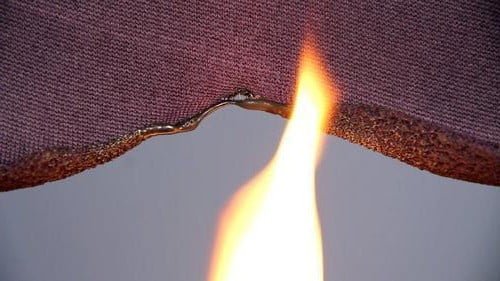Fabrics and furniture are the first things to catch fire because of their ignitibility, but due to the rise of flame retardant treated fabrics and furniture, the way people used to live has been now revolutionized.
Back in the day, curtains and other furniture were the first spreaders of fire, but now with the development of fire-retardant curtains and other furniture treated with flame-retardant fabrics, the damage caused by fires has been greatly reduced. These fabrics keep you, your home, and your furniture safe from fire by providing resistance against it.
This guide will help you further understand flame retardant-treated fabrics, how they are made, and their types.
What Are Flame Retardant Fabrics?
The first thing to understand about flame-retardant fabrics is that there is a difference between flame-retardant fabrics and flame-resistant fabrics. Flame-resistant furniture or fabric is made from material that is naturally resistant to flames or non-flammable – due to chemical composition.
Flame retardant fabrics are made in a way that they can self-extinguish when they’re burning. They are treated with chemicals so they can slow down the process of burning or avoid burning in general. A flame-retardant-treated fabric takes significantly longer to burn compared to other fabric types and materials.

Types Of Flame Retardant Treated Fabrics
A flame retardant fabric is a type of fabric that is resistant to burning. With that understanding, let’s look at the two types of flame retardant fabrics: chemically treated fabric and inherently treated fabric.
Chemically-Treated Fabric
Fabrics under this category are made into flame-retardant fabrics after being treated with chemicals. They’re originally flammable fabrics but are treated with flame-resistant chemicals through various methods. They can prevent fires, slow their spread or resist it.
Inherent Flame-Retardant Fabric
These fabrics are naturally resistant to flames. No flame retardant properties were added to their fibers when they were engineered. As they’re naturally resistant to flames, they don’t undergo any additional treatment. Some examples are of wool and Kevlar. These can resist flames better compared to materials like linen or cotton because of the arrangement of their fibers. These are very good fabrics and offer great resistance against flames.
How Are Flame-Retardant Fabrics Made?
There are two common methods to make fabrics flame retardant.
Chemical Dipping Technique
Just like the name suggests, this method involves the fabric being dipped in a chemical solution. When the chemicals get absorbed in the fibers of the fabric, it acts as a barrier that resists the flames from passing through the fabric. The chemicals activate when the exposure to heat is excessive. The process is quite similar to how fire extinguishers extinguish flames. This technique is best for fabrics made from natural materials.
Coating Technique
In this method, the fabric is made flame retardant by applying a fire-retardant back-coating to the fabric instead of dipping it in chemicals. This process can lead to the fabric looking firm and less flexible.
bottom line
Using a flame-retardant fabric for clothing or furniture serves as a layer of protection against flames. It protects you and your home from the devastating damage caused by fires. They can also decrease injuries and risk.
Now that you know everything there is to know about flame-retardant fabrics, we advise you to purchase flame-retardant-treated fabrics or furniture from a trusted supplier.
